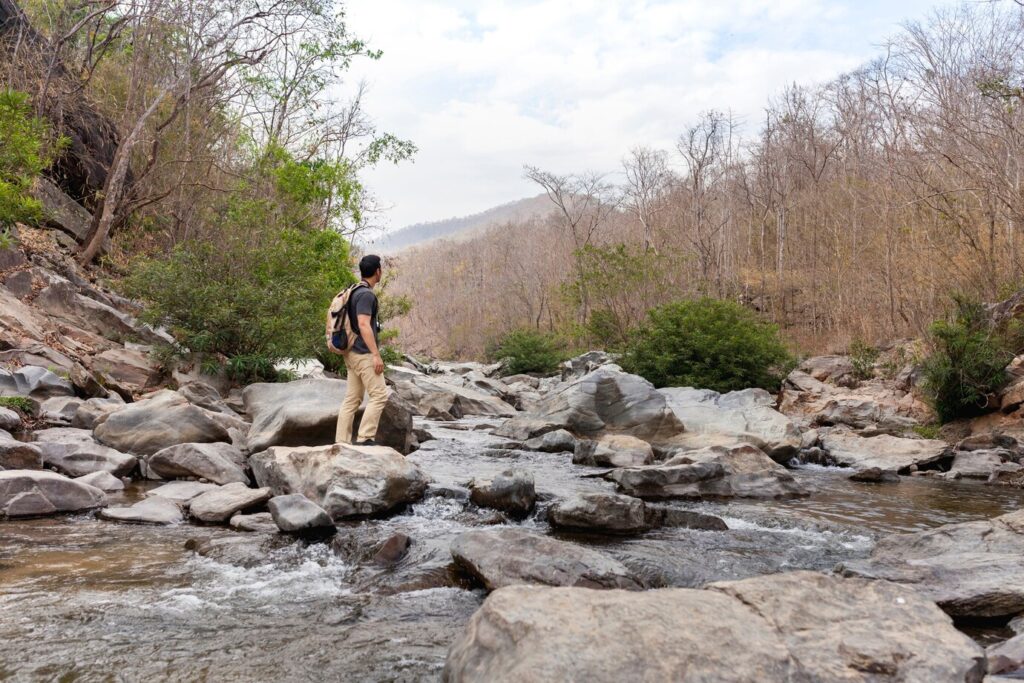Rough country evokes images of vast, untamed landscapes, where nature reigns supreme and human civilization feels a distant echo. These rugged terrains, ranging from barren deserts to craggy mountains, possess a unique allure. They offer a canvas of natural beauty, but also present significant challenges and opportunities for those who venture into them. This article delves into the essence of rough country, exploring its diverse landscapes, the inherent challenges, the allure it holds, and the strategies for navigating and thriving in these harsh environments.
Understanding Rough Country
Rough country generally refers to areas with difficult terrain that can be challenging to traverse. This includes regions with rugged topography, harsh climates, and minimal human infrastructure. The term often conjures images of the wild outdoors where natural forces have shaped the land into formidable forms.
Geographic Diversity
Rough country encompasses a variety of geographic features, each presenting its own set of challenges:
- Mountainous Regions: These areas are characterized by steep slopes, rocky surfaces, and high altitudes. Mountainous terrains often include alpine meadows, deep valleys, and rugged peaks. The elevation can create a harsh climate with cold temperatures and heavy snowfall.
- Deserts: Deserts, such as the Sahara and the Sonoran, are defined by extreme aridity, with very little rainfall and high temperatures. The landscape often features sand dunes, rocky plateaus, and sparse vegetation.
- Forests and Woodlands: Even within forests, certain areas can be considered rough country due to dense vegetation, uneven ground, and the presence of large boulders or fallen trees. These regions may also face challenges like heavy rainfall and thick undergrowth.
- Arctic and Subarctic Regions: These areas include tundra and ice fields where the terrain is characterized by permafrost, ice, and sparse vegetation. The harsh cold and icy conditions make these regions particularly challenging.
- Swamps and Marshlands: Characterized by wet, boggy ground and slow-moving water, swamps and marshlands present difficulties due to their muddy, unstable surfaces and the prevalence of mosquitoes and other insects.
The Allure of Rough Country
The allure of rough country lies in its untamed beauty and the sense of adventure it provides. For many, these landscapes represent an escape from the constraints of modern life and an opportunity to connect with nature in its most raw and unfiltered form.
1. Natural Beauty
The natural beauty of rough country is undeniable. The dramatic landscapes, whether it’s the towering cliffs of a mountain range or the expansive dunes of a desert, offer breathtaking views that are often untouched by human development. This unspoiled beauty is a significant draw for outdoor enthusiasts, photographers, and nature lovers.
2. Sense of Adventure
Navigating rough country often requires skills, perseverance, and a sense of adventure. The challenges presented by such terrains can be invigorating, offering a sense of accomplishment and connection to the environment. Activities like hiking, climbing, and off-roading provide exhilarating experiences that are distinct from more managed or developed landscapes.
3. Wildlife Encounters
Rough country is often home to diverse wildlife adapted to the harsh conditions. From mountain goats navigating steep slopes to desert creatures thriving in arid environments, the opportunity to observe and learn about these animals adds to the allure. For wildlife enthusiasts and researchers, these regions offer valuable insights into animal behavior and adaptation.
Challenges of Rough Country
While the appeal of rough country is strong, it is essential to acknowledge the significant challenges associated with these environments. Understanding these challenges is crucial for anyone planning to venture into or live in such areas.
1. Navigational Difficulties
The rugged terrain of rough country can make navigation challenging. Steep slopes, rocky surfaces, and dense vegetation can obscure trails and landmarks. GPS devices and maps may be essential, but they are not always reliable or easy to use in remote areas.
2. Harsh Climate
The climate in rough country can be extreme and unpredictable. High altitudes can result in cold temperatures and sudden weather changes, while deserts can experience scorching heat during the day and freezing temperatures at night. Proper clothing, gear, and preparation are necessary to withstand these conditions.
3. Limited Resources
Resources such as water, food, and shelter may be scarce in rough country. In deserts and arctic regions, finding adequate water and food can be particularly challenging. Survival skills and preparation are vital for those spending extended periods in these environments.
4. Physical Demands
Navigating rough terrain often requires physical endurance and strength. Activities like hiking, climbing, or off-roading can be physically demanding and may require specialized training and equipment. Physical fitness and proper conditioning are essential for safely and effectively traversing these areas.
5. Environmental Hazards
Rough country can present various environmental hazards, including rockfalls, avalanches, and extreme weather events. Awareness of these risks and the implementation of safety measures can help mitigate potential dangers. In some regions, natural hazards like flash floods or shifting sands also pose significant risks.
Exploring and Enjoying Rough Country
Despite the challenges, rough country offers a wealth of experiences for those prepared to embrace its rugged nature. With the right approach, adventurers can safely and enjoyably explore these wild landscapes.
1. Preparation and Planning
Proper preparation is key to navigating rough country successfully. This includes:
- Researching the Terrain: Understand the specific characteristics of the area you plan to visit. Research potential hazards, weather patterns, and available resources.
- Packing Essentials: Equip yourself with essential gear such as sturdy footwear, navigation tools, weather-appropriate clothing, and survival supplies.
- Physical Conditioning: Ensure you are physically prepared for the demands of the terrain. Regular exercise and training can enhance your endurance and strength.
- Safety Measures: Inform others of your plans and expected return time. Carry a first aid kit and be familiar with basic first aid procedures.
2. Outdoor Activities
Rough country offers a range of activities that cater to different interests and skill levels:
- Hiking and Trekking: Explore trails and paths through rugged landscapes. Hiking in rough country provides an opportunity to experience the terrain up close and witness its natural beauty.
- Climbing and Mountaineering: Challenge yourself with climbing and mountaineering in mountainous regions. These activities require specialized skills and equipment, but they offer unparalleled views and a sense of accomplishment.
- Off-Roading: Navigate through deserts, rocky trails, or dense forests using off-road vehicles. Off-roading can be an exhilarating way to explore rough country, but it requires careful driving and respect for the environment.
- Wildlife Observation: Observe and study wildlife adapted to rough country environments. Wildlife watching can provide valuable insights into animal behavior and adaptations.
- Camping: Experience the rugged beauty of rough country by camping in remote areas. Proper preparation and campsite selection are essential for a safe and enjoyable camping experience.
3. Environmental Stewardship
Preserving the natural beauty of rough country requires responsible behavior and environmental stewardship:
- Leave No Trace: Follow the Leave No Trace principles by minimizing your impact on the environment. This includes packing out all waste, avoiding damage to vegetation, and staying on established trails.
- Respect Wildlife: Observe wildlife from a safe distance and avoid disturbing their natural behavior. Properly store food and follow guidelines to prevent attracting animals to your campsite.
- Follow Regulations: Adhere to local regulations and guidelines for outdoor activities. This may include permits, designated trails, and restricted areas.
Rough Country and Human Resilience
Rough country challenges the limits of human resilience and adaptability. Throughout history, people have ventured into these harsh environments, driven by curiosity, exploration, and the pursuit of adventure.
1. Historical Exploration
Historically, explorers and pioneers have ventured into rough country to discover new territories and expand human knowledge. Their journeys often involved overcoming significant obstacles, including treacherous terrain and extreme climates.
2. Indigenous Cultures
Many indigenous cultures have thrived in rough country environments for centuries. Their deep knowledge of the land, resourcefulness, and adaptation to harsh conditions offer valuable lessons in survival and sustainability.
3. Modern Exploration
Today, modern adventurers and researchers continue to explore ro-ugh country. Advances in technology and gear have made these explorations more accessible, but the challenges remain significant. Scientific research, adventure sports, and environmental conservation efforts contribute to our understanding and appreciation of these wild landscapes.
Conclusion
Rough country represents a realm of natural beauty and challenge, where the forces of nature shape the land into breathtaking and formidable forms. From mountainous peaks and arid deserts to dense forests and icy tundras, these rugged landscapes offer a unique and captivating experience for those willing to embrace their harsh conditions.
The allure of rou-gh country lies in its untamed beauty and the sense of adventure it provides. Navigating these terrains requires preparation, resilience, and respect for the environment. By understanding the challenges and embracing the opportunities, individuals can safely and enjoyably explore the rugged beauty of rough country.
Whether you are an adventurer seeking new thrills, a nature enthusiast appreciating the wild, or a researcher studying the environment, rou-gh country offers a profound and enriching experience. As we continue to explore and appreciate these landscapes, it is essential to balance our curiosity with a commitment to preserving their natural beauty for future generations.







